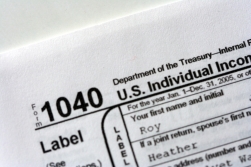 Amat Victoria Curam (this blog) has moved its home. The blog is now hosted at http://www.clsheldon.com/amat-victoria-curam . Hope to see you there.
Amat Victoria Curam (this blog) has moved its home. The blog is now hosted at http://www.clsheldon.com/amat-victoria-curam . Hope to see you there.
Curt

 Amat Victoria Curam (this blog) has moved its home. The blog is now hosted at http://www.clsheldon.com/amat-victoria-curam . Hope to see you there.
Amat Victoria Curam (this blog) has moved its home. The blog is now hosted at http://www.clsheldon.com/amat-victoria-curam . Hope to see you there.
Curt
 A pretty standard “laugh line” in Sitcoms goes something like this, “Be quiet Dad or I’ll put you in a home“. Junior might want to think twice about acting on that threat, especially if he lives about 1/2 of the States in the United States. That is because in these States there are laws on the books that can make Junior responsible for Unpaid Long-Term Care Expenses or for “undeserved” MEDICAID payments. This is because these states have Filial Support Laws.
A pretty standard “laugh line” in Sitcoms goes something like this, “Be quiet Dad or I’ll put you in a home“. Junior might want to think twice about acting on that threat, especially if he lives about 1/2 of the States in the United States. That is because in these States there are laws on the books that can make Junior responsible for Unpaid Long-Term Care Expenses or for “undeserved” MEDICAID payments. This is because these states have Filial Support Laws.
Filial Support Laws, in their different forms, require that a child (and even in some cases a grandchild) provide support for his/her parents. In some states, it can even be a crime not to do so. These Laws can come into effect in a couple of different situations.
Most the laws require that the parent spends down assets and truly be unable to pay the bills (in the first case) prior to the child being sued. In the second case, the Omnibus Budget Act of 1993 has rules that “compel agencies to collect back funds they’ve expended on MEDICAID services from families if they discover the families have assets available.” From what I understand, this generally only applies to assets that the parents possessed and they transferred ownership to the children…but I’m not guaranteeing that.
So…what to do about it. Talk. Have a talk with your parents. Are they financially prepared for Long-Term Care? Are there assets that can be used/converted to pay for Long-Term Care? Will anyone help Mom or Dad pay for Long-Term Care if it becomes necessary? And…then have the same talk with your Spouse about how you will plan to pay for your Long-Term Care and take action while you still can. And…then have the same talk with your children and tell them the plan. They need to know the plan before they are faced with the phone call about how something needs to be done, now.
What not to do…trying to “beat the system” by things you may have heard at the water cooler or in the barracks. Some planning can be done to minimize the impact, but you need to get competent Estate/MEDICAID planning advice.
Long-Term Care planning is part of a comprehensive Financial Plan and a trueFinancial Planner, in conjunction with your Estate Planning Attorney, should be able to help you put a plan in place.
Curt Sheldon is an Independent Fee-only Financial Planner located in Alexandria VA with clients throughout the US.
He specializes in assisting transitioning Senior Military Officers reach their financial goals.
 One of the assets classes you might want to consider in your overall asset allocation is Real Estate. One of the ways you can access Real Estate in your portfolio is through Real Estate Investment Trusts also called REITs (pronounced like beets).
One of the assets classes you might want to consider in your overall asset allocation is Real Estate. One of the ways you can access Real Estate in your portfolio is through Real Estate Investment Trusts also called REITs (pronounced like beets).
What are REITs?
REITs, like many other investment options are a basket. In the case of REITs the basket holds real estate and normally it holds commercial real estate. REITs can also hold mortgages. The REITs then collect income in the form of rent and capital gains if the property appreciates or in the case of REITs that hold mortgages the income will include interest payments.
How can I own REITs?
You can purchase individual REITS, much like stocks. There are listed and non-listed REITs. Listed REITs are traded on exchanges. Non-listed REITs are not traded on exchanges and can be difficult to sell. To me, because of the lack of liquidity, non-listed REITs are not a great alternative for most people.
You can also own REITs through Mutual Funds and ETFs. For instance you can purchase a REIT Index Mutual Fund or ETF through Vanguard (not a recommendation). This investment owns a number of REITs.
What is the Advantage of owning REITs?
REITs can provide additional diversification and risk reduction in a portfolio. Real Estate is not normally closely correlated with the stock market. The correlation between Real Estate and US Large-Cap Stocks (the S&P 500) is 0.60. This means that Real Estate tends to move in the same direction as US Large-Cap Stocks, but not always. Low correlation reduces risk and may even increase gains. Here is an example from Morningstar…
Assume a portfolio composed of the following asset classes:
50% Stock
40% Bonds
10% Cash
From 1972 – 2013 the above portfolio would have returned an average of 8.6% with a Standard Deviation (how investment advisors measure risk) of 10.8%.
Now let’s modify the portfolio to the following:
45% Stock
35% Bonds
10% Real Estate (REITS)
10% Cash
Over the same time period the modified portfolio would have returned an average 10.3% (1.7% higher) with a Standard Deviation of 10.4% (0.4% lower). Investment alchemy…increased returns with reduced risk.
Any downsides?
Like any investment REITs have risk. You can lose money investing in Real Estate (not that we need to be reminded about that).
The bigger issue though is taxation. REITs produce a dividend income and here is the kicker…the dividends are NOT qualified. That means they are taxed at your marginal rate which could be 28% or more. So, you generally want to hold REITs in tax advantaged accounts. 401(k)s and Traditional IRAs would be good choices.
Wrapping it up
Real Estate can be an appropriate asset class to include in your portfolio. Using REITs to access Real Estate can reduce the overall risk of a properly constructed portfolio and potentially increase the portfolio’s return.
Do REITs make sense for you? A complete financial plan will help you know for sure.
Curt Sheldon is an Independent Fee-only Financial Planner located in Alexandria VA with clients throughout the US.
He specializes in assisting transitioning Senior Military Officers reach their financial goals.
 If you like what you read or have read here please consider voting for my site as the Best-Kept Secret Personal Finance Blog. You can do so by clicking on this link.
If you like what you read or have read here please consider voting for my site as the Best-Kept Secret Personal Finance Blog. You can do so by clicking on this link.
http://www.plutusawards.com/?secret=http://www.clsheldon.wordpress.com
Please Vote early (I don’t think you can vote often, but feel free to try) before August 25th.
 A lot of the readers of this blog, including Senior Military Officers, often need to deal with the tax and financial consequences of inheriting the Family Home. If Mom and Dad have owned this home for a long time, there is going to be a big capital gain (and big tax bill), right? Probably not. Here is one of few times where the IRS tax rules (technically the rules start with the laws the Congress writes) are actually in your favor.
A lot of the readers of this blog, including Senior Military Officers, often need to deal with the tax and financial consequences of inheriting the Family Home. If Mom and Dad have owned this home for a long time, there is going to be a big capital gain (and big tax bill), right? Probably not. Here is one of few times where the IRS tax rules (technically the rules start with the laws the Congress writes) are actually in your favor.
Income taxes will be due on the amount that the sale price exceeds the basis in the property. So what is the basis in the property? Normally, the basis “steps-up” to the fair market value (FMV) of the property on the date of death (this is true of all assets including securities). There are certain circumstances where the executor of the estate can elect to set the basis of the property based on the FMV of the property 9 months after death. This is normally accomplished when Estate Tax is a concern.
Here’s an example…
Who owes the tax?
Under most circumstances, the person who inherits the property will pay the tax. This will happen if:
If the estate does not distribute the capital gains, there is at least the possibility that the estate will have to pay taxes on the capital gain.
What if the value of the house goes down or the fees cause a loss on sale? It depends. If the estate just holds the house with the objective of selling it at a gain or if the house is used is a rental then the loss will be deductible. If, on the other hand, the house becomes a personal residence for one of the heirs, then the loss would be personal and not deductible.
A couple of caveats…First, this is how the Federal Tax Code works. Each state is different. This article only addressed income tax. Estate taxes could be due at either the Federal or State level.
Estates are complicated. Make sure you know what you’re doing or get competent financial/legal advice.
Curt Sheldon is an Independent Fee-only Financial Planner located in Alexandria VA with clients throughout the US.
He specializes in assisting transitioning Senior Military Officers reach their financial goals.
 Have you heard of the Government Pension Offset (GPO)? If you have worked for a Government entity (Federal, State or Local) where you did not pay Social Security taxes you might be subject to it. So…this could apply to GS employees who were covered under CSRS (Civil Service Retirement System)…If you are covered by FERS you’re probably o.k.
Have you heard of the Government Pension Offset (GPO)? If you have worked for a Government entity (Federal, State or Local) where you did not pay Social Security taxes you might be subject to it. So…this could apply to GS employees who were covered under CSRS (Civil Service Retirement System)…If you are covered by FERS you’re probably o.k.
Specifically, GPO applies to your spousal/widow(er)’s benefits (The social security you would receive based on your spouse’s earnings). If you didn’t pay into Social Security, your spousal and widow(er)’s benefits will be reduced in relation to your Government Pension. Your social security benefits (spousal/widow(er)’s) benefits will be reduced by two-thirds of your Government Pension. For example…
Your Government Pension is $900
Your Spousal Social Security Benefits (prior to adjustment) are $700
You will receive $100 in Spousal Social Security Benefits ($700 – ($900 x 2/3)
The Social Security Administration states that this is because that for those without government pensions their spousal benefits are offset dollar for dollar by their own earned Social Security benefit. In other words, for those covered by Social Security only, the most you will receive is the higher of your earned benefits or spousal benefits.
There are exceptions to the rules and you can find out more at http://www.socialsecurity.gov/pubs/EN-05-10007.pdf
Also, GPO does not affect your own earned Social Security Benefits….but the Windfall Elimination Provision might (more in a future article)
Curt Sheldon is an Independent Fee-only Financial Planner located in Alexandria VA with clients throughout the US.
He specializes in assisting transitioning Senior Military Officers reach their financial goals.
 If you recently retired from the military or have been in for 15 years or so you may have more Social Security benefits than your income would indicate. If you served in the military in the timeframe of 1957 – 2001 your earnings will be “beefed up”. Now all this assumes that you served honorably and in some cases served a minimum amount (2 years). But here are a couple of the details…
If you recently retired from the military or have been in for 15 years or so you may have more Social Security benefits than your income would indicate. If you served in the military in the timeframe of 1957 – 2001 your earnings will be “beefed up”. Now all this assumes that you served honorably and in some cases served a minimum amount (2 years). But here are a couple of the details…
For those who served between 1957 – 1977 your earnings will…
For those who served between 1978 – 2001 your earnings will…
For service after 2001, there are no additional benefits.
A pretty good deal…make sure you check that it is included when you file.
Curt Sheldon is an Independent Fee-only Financial Planner located in Alexandria VA with clients throughout the US.
He specializes in assisting transitioning Senior Military Officers reach their financial goals.
 Do you think about taxes before you make investments? You should. Controlling your tax bill is easier when you think about taxes before you “buy”. What I’m talking about is tax efficient investing. Today, I’m going to discuss a basic level of tax efficient investing…selecting tax-efficient Mutual Funds and ETFs.
Do you think about taxes before you make investments? You should. Controlling your tax bill is easier when you think about taxes before you “buy”. What I’m talking about is tax efficient investing. Today, I’m going to discuss a basic level of tax efficient investing…selecting tax-efficient Mutual Funds and ETFs.
When you look at a Mutual Fund’s (or ETF’s) advertising materials you will normally see the fund’s returns. You will see the same or similar numbers on many “independent” fund ranking sites. But, what you’re not seeing is the after-tax return and the difference can be significant.
The reason comes down to how the fund earns its money. If a fund is actively managed, then normally there are more transactions and because of those transactions capital gains are recognized throughout the year. The capital gains will be distributed to the mutual fund shareholders in December and those distributions are taxable (assuming the funds are held in a taxable account). On the other hand, a passive/index fund will not have as many transactions and have lower capital gains to distribute in December.
So let’s take a look at a couple of examples. I’m not recommending any of these funds, but have selected them only to illustrate the point. We’ll look at some funds using on-year return as a determining factor (again, not recommending that you use one-year return as a determining factor but some do). Two asset classes that are illustrative are Large-Cap Blend and Small-Cap Value.
Using the returns above, you might be tempted to select the fund listed first. If you’re putting these funds in a taxable account, that might be a mistake. Let’s look at the same funds’ after-tax return (after tax returns are based on the highest tax bracket).
In both cases, the higher earning fund distributed more earnings (due to portfolio turnover) in December and as a consequence of the resulting taxes, their returns were reduced by almost 1/3 to below the after-tax return of the index ETFs.
What can you do about it? First ask your advisor if he/she considers tax efficiency when he/she builds your portfolio. If not, ask why and then ask yourself why he/she is your advisor. If you don’t have an advisor and don’t want one, information of funds’ tax efficiency is available through Morningstar.
Tax efficiency matters. There is a concept called “Tax Alpha” which basically describes the additional return that can be achieved through tax-efficient investing. Some studies put “Tax Alpha” at around 1-2%. Something to think about…
Curt Sheldon is an Independent Fee-only Financial Planner located in Alexandria VA with clients throughout the US.
He specializes in assisting transitioning Senior Military Officers reach their financial goals.
 In my last post, I talked about how a non-deductible Traditional IRA can be an effective tool to minimize taxes especially when the assets in the IRA “throw-off” a significant amount of income and the income is taxed at your marginal rate. What if that isn’t the case? Well…that is the topic for this post. What if you were to deposit your Large-Cap Stock Funds into a Traditional IRA? Let’s take a look.
In my last post, I talked about how a non-deductible Traditional IRA can be an effective tool to minimize taxes especially when the assets in the IRA “throw-off” a significant amount of income and the income is taxed at your marginal rate. What if that isn’t the case? Well…that is the topic for this post. What if you were to deposit your Large-Cap Stock Funds into a Traditional IRA? Let’s take a look.
First the assumptions that I’ll use.
In the first scenario, you can contribute $5,500 to a tax-deductible Traditional IRA or $4,125 ($5,500 – $5,500 x 25%) to a taxable account. So which one wins? The ability to contribute pre-tax dollars to the Traditional IRA outweighs the lower tax rate paid on the investments in the taxable account every year. After 30 years the after-tax account values are …
So the Deductible IRA puts more money in your pocket.
In the second scenario, you can contribute $5,500 to a non-deductible Traditional IRA or $5,500 to a taxable account. In this case, even though you pay taxes on the dividends as they are paid, the taxable account is worth more than the non-deductible Traditional IRA each year. After 30 years the after-tax account values look like this…
So, the bottom line? As the Weapons School Instructors used to say, “It depends”. Think about what tax strategy will put the most money in your pocket before you allocate your assets to separate accounts or get someone who can help you figure it out for you.
Curt Sheldon is an Independent Fee-only Financial Planner located in Alexandria VA with clients throughout the US.
He specializes in assisting transitioning Senior Military Officers reach their financial goals.
 A lot of Senior Military Officers at some point in their career lifetime find (or think) that they have limited retirement plan options.
A lot of Senior Military Officers at some point in their career lifetime find (or think) that they have limited retirement plan options.
While on Active Duty they are most likely not eligible to contribute to a Traditional IRA and take a tax deduction. They may be eligible to contribute to a Roth IRA and their spouse may be able to contribute to a deductible Traditional IRA.
After starting their second career their options are often even more limited. Like while on Active Duty the Senior Military Officer will most likely not be able to contribute to a deductible Traditional IRA. The retired Senior Military Officer will now often find that he/she will not be able to contribute to a Roth IRA and the officer’s spouse may not be eligible to contribute to a Roth or deductible Traditional IRA either.
But in both cases there is an alternative – the non-deductible Traditional IRA. But I find that often when the immediate tax deduction is eliminated most people lose interest in the non-deductible Traditional IRA. That could be a mistake…
Tax deferral is still a powerful tool. Let’s look at an example. Here are the assumptions:
So, after 20 years (15 years of contributions and 5 years of further appreciation)…
In both cases, the non-deductible IRA puts more money in your pocket than paying taxes as you go along in the taxable account.
Capital Gains can potentially change the results since capital gains, in most cases, are taxed at a lower rate than the individual’s marginal tax rate. So you wouldn’t want to do this with assets that primarily produce capital gains. That is called Tax Efficient Investing and is a topic for another day.
Curt Sheldon is an Independent Fee-only Financial Planner located in Alexandria VA with clients throughout the US.
He specializes in assisting transitioning Senior Military Officers reach their financial goals.